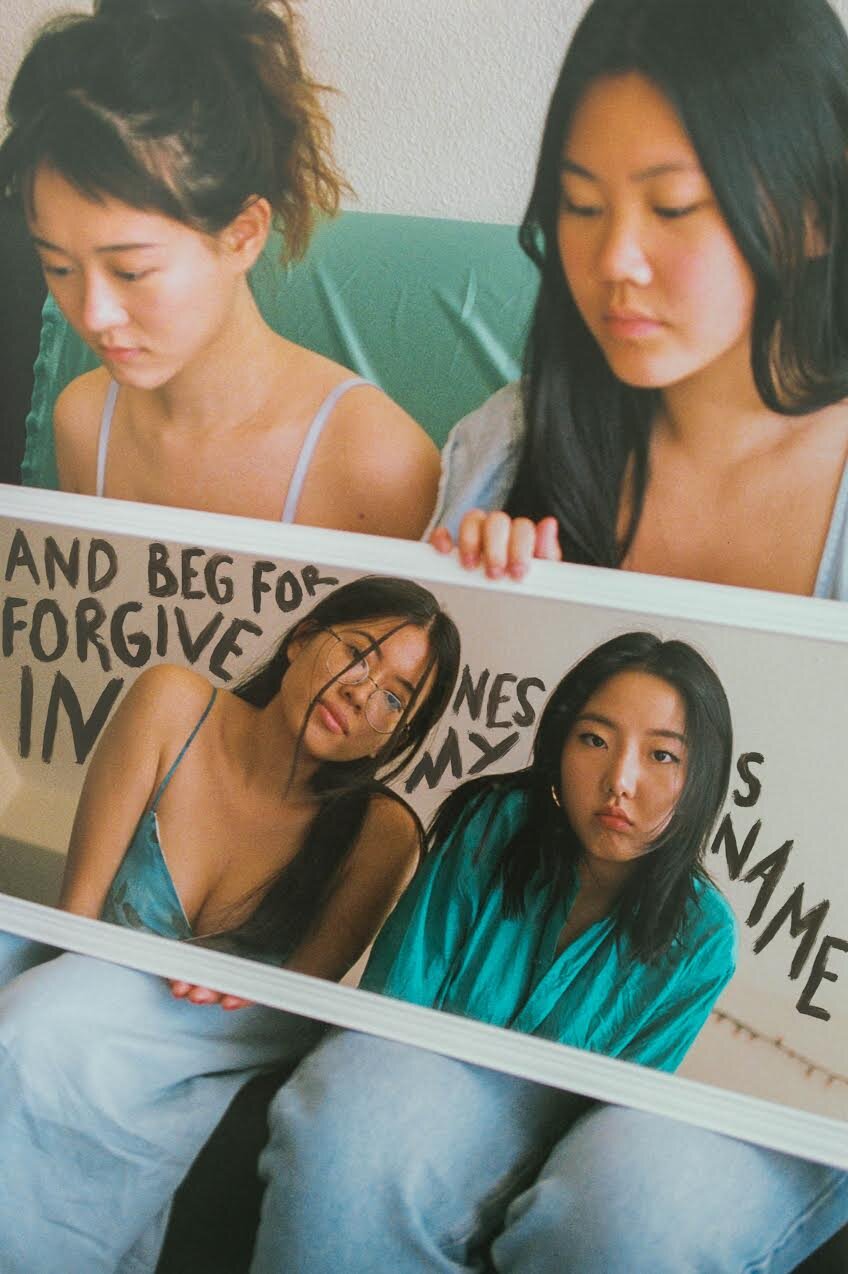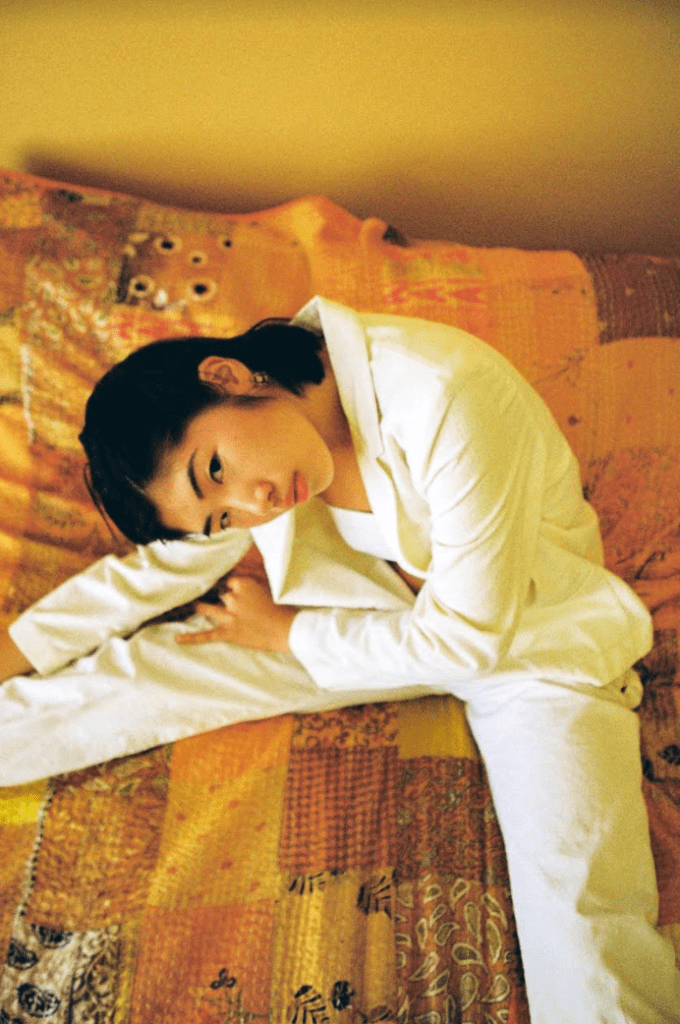Interview with Yong Loh
What initially drew you to photography as a passion and as a career?
Too many factors. Maybe it was my mum’s shitty little digital camera, which was the first thing I ever shot on. Or it could be the fact that I’ve always thought in terms of visuals rather than words – I don’t have an inner monologue, and I spent more of my childhood drawing and painting than talking. I’ve always admired all the moving parts that go into creating an image like the lighting, posing, set design, or even which lens you use. Having so many decisions to make for a single photograph forces you to be more intentional with your choices and how they communicate an idea. It’s that specificity that I love dealing with, and for that reason, I find that photography is one of the best mediums for me to work in.
Who are your biggest inspirations in photography and in everything?
In no particular order: Cho Gi Seok, Ren Hang, Luo Yang, Wong Kar Wai, John Yuyi, Nadine Ijewere, Wing Shya, Leslie Zhang, Eponine Huang, Andrew Thomas Huang, Min Hyunwoo, Bong Joon Ho, Kelela, Dexter Navy, Hayao Miyazaki, Solange, Lee Chang-dong, FKA Twigs, Maya Deren and all the beautiful people in my life.
What is your process before, during, and after a shoot? What do you prepare, and what do you find comes spontaneously?
Developing a concept for a shoot is definitely the longest process for me. When I’m conceptualising, I draw and make notes on whatever’s around me. My desk is littered with sketches on scrap paper, receipts and napkins – and I always throw my drawings out once I complete a project because I like the idea of continuously moving forwards. After that, I’ll start contacting people and bringing everything together.
I feel the most calm when I’m shooting. It’s just the most straightforward part because I’ve already prepared and deeply considered everything before going into it. All the preparation I’ve done allows for spontaneity on set. I prefer to provide strong direction for whoever’s posing for me, but I still leave enough room to experiment and bounce ideas off each other. I’m always chatting to people on set because it makes everything feel a lot less clinical and helps models to relax. It’s also nice to be personal with others, even in a working environment.
For the longest time, I was really intimidated by technology and software, so I didn’t properly learn how to use a lot of programs until a year or two ago – which means that I never edited any of my photos when I was first practicing. That’s something I’ve still maintained to an extent. I don’t edit my photos much, maybe just a few colour corrections. In the future, I’d definitely like to play around with editing, and I’m intrigued to see what will come out of that.
I’ve noticed that you use a lot of nature imagery in many of your photos, including your collection For Every Flower Forced to Bloom (2018). How do you use that to convey the message you want your audience to take in?
In “For Every Flower Forced to Bloom”, I wanted to draw parallels between experiencing growing pains as a young person and flowers that are forced to bloom too early. Both are influenced by external factors that are out of the subject’s control, and that was a really grounding realisation I had while I was reflecting on my own childhood trauma. It’s a really human thing to find comfort in connecting with the natural world, and that’s something I wanted to explore. In the process of creating this piece, I invited people I knew and people I didn’t to engage in discussions about growing pains. From these stories, I found subjects for the shoot and took portraits of them with different flowers. When I exhibit this piece at shows, I put a bowl or an envelope under the prints to hold printed out and cut up chunks of text that I’ve taken from conversations about difficult childhoods with the models in the shoot and also friends and strangers.
In your collection, Uprooted, you use bright colors that contrast the black writing on the backdrops. What inspired this shoot, and why you wanted to put it out into the world?
Uprooted began with a poem I wrote out of complete frustration. Since moving to the US, I’d felt disappointed by the lack of visibility in mainstream media surrounding the ways in which Asian women have been historically oppressed and how this informs the way we are treated and seen today. I sat down one afternoon and wrote until I felt a little better about the world. From that poem grew a photography series. I cast friends who were of East Asian descent and photographed them holding up backdrops for themselves and each other to evoke imagery that promoted Asian women leaning on and supporting one another.
Through this project, I wanted to reclaim objects that had been used to create stereotypes of otherness and recontextualise them as markers of beauty and strength. For example, I used grains of rice to create makeup looks on two of the models. In one of the images, I portrayed chopsticks being used to pull at a model’s eyes. In this shot, I wanted to comment on the ways in which Western beauty standards have influenced Asian beauty standards – as larger eyes and smaller noses are common facial surgeries that young people desire and often go through. These ideals are unachievable and therefore, should not be perpetuated, as they hurt not only our community but other minorities too.
I chose to incorporate bright reds, yellows, blues, and greens because they are the most commonly used colours in Asian flags. By writing the poem in black paint over the image surface, I wanted to insert confrontational dialogue and a direct address into the piece. I want the viewer of this series to challenge their own beliefs and ideas surrounding Asian women and consider what it means to be one. I’m incredibly grateful to all the divine women involved in this project. Finding the agency and freedom to reframe and elevate the image of Asian women was absolute magic.
What do you find the most fulfilling about your art? The most challenging?
Art has always been a form of healing for me. It’s something I’ve done very ritualistically since I was a child, and it continues to teach me things about myself to this day. One of the most fulfilling things that have come out of doing art has been the community of artists I’ve been lucky enough to encounter that push me to keep improving. It’s also been such a comfort in the ways that it allows me to express myself to other people. Sometimes it is very difficult and frustrating to deal with the constant pressure to be something I’m not – especially when it comes to being an independent artist and sharing your work online.
There’s an expectation for you to churn out new content every week or every couple of days, but for me, all the pleasure in creating is removed when I am forced to create without intention. At the end of the day, it just goes to show how much capitalism has infiltrated our lives, and it’s important to disconnect from that way of thinking. Please stop taking gigs for “exposure” and, instead, demand that you are paid for your work – as you would in any other profession. Making beautiful images is easy, but saying something through that is a lot harder and takes more time to craft. I don’t want to make fast food. I want to create work that touches people and makes them feel something.
What pieces of art involving Asian women/Asian artists have caught your eye lately?
I’ve been obsessed with Luo Yang ever since I went to her 2018 show, “Girls”, in my hometown. I absolutely loved Yaeji’s new album, WHAT WE DREW. Miki Kim and her wonderful tattoo designs. Any Wong Kar Wai film featuring Maggie Cheung or Faye Wong. Actually, any Wong Kar Wai film. Going to local DJ sets in LA to see Carrie Kaili and Luke Kim perform. Any of the beautiful collections made by Supriya Lele, Kim Shui, SHUSHU/TONG, or Yuhan Wang. John Yuyi’s entire body of work. I could honestly keep going forever.
What do you think are the biggest challenges facing Asian women today?
Being rendered invisible despite our protests. Our oppression being viewed as less valid or real. Few people are wanting or taking the initiative to educate themselves on how Asian women have suffered in the history of the world. The normalisation of fetishising Asian women. Dealing with the misogyny and restriction that is deeply rooted in a lot of cultures and traditions within Asia.
What’s next for you? Any exciting new projects?
At the moment, I’m finishing up post-production for a short film I directed last year called Tapioca Pearl. One of my very dear friends, Tee Park (@teejpark), wrote and acted in this film. I’ve been taking a much-needed break from photography to explore filmmaking, and I’m hoping to venture into making clothes and DJ sets. I’ve also been trying to focus more on community outreach and find ways to provide aid through art.
Photo Taken by: Ahhyun Kim
Yong Loh is a multidisciplinary artist from Bangkok, Thailand. As the daughter of immigrants from Hong Kong and Malaysia, she is predominantly interested in exploring facets of her own identity in a personal and familial context. Currently, she is studying Film & TV Production in Los Angeles and is completing post-production on an upcoming independent short film, Tapioca Pearl.
You can find more of her work at www.yongloh.com or on her Instagram @yongloh.






